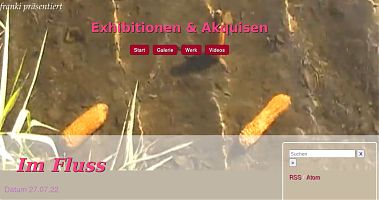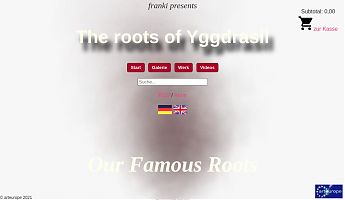The most expensive spices
Datum
Summary
The most expensive spice in the world is currently the Aji Charapita chili, which can cost up to €24,000 per kilogram because it is laboriously harvested by hand in Peru and has a very low yield. This represents a change from the long-standing leading position of saffron, which remains one of the most expensive spices and costs between €6,000 and €20,000 per kilogram, depending on quality. Vanilla follows in third place with prices between €400 and €2,000 per kilogram, mainly due to its complex harvesting and fermentation process.
Aji Charapita chili:
This pea-sized chili pepper is considered the most expensive spice in the world because it is harvested in small quantities and exclusively by hand. Its price can reach up to 24,000 euros per kilogram, which is due to its rare availability and the high cost of harvesting it.
Saffron:
For a long time, saffron was considered the most expensive spice in the world. It is extracted from the stigmas of the saffron crocus, with around 150,000 to 200,000 flowers needed to produce one kilogram. Harvesting is done exclusively by hand during a short flowering period of two weeks per year, which greatly increases the price.
Vanilla:
Known as the queen of spices, vanilla is expensive due to its intensive fermentation process and the need for manual pollination of the orchid flowers. The price varies between 400 and 2,000 euros per kilogram, depending on quality and origin.
The Aji Charapita chili pepper
is an exotic chili variety that originates from the tropical north of Peru and grows on the border with Brazil.
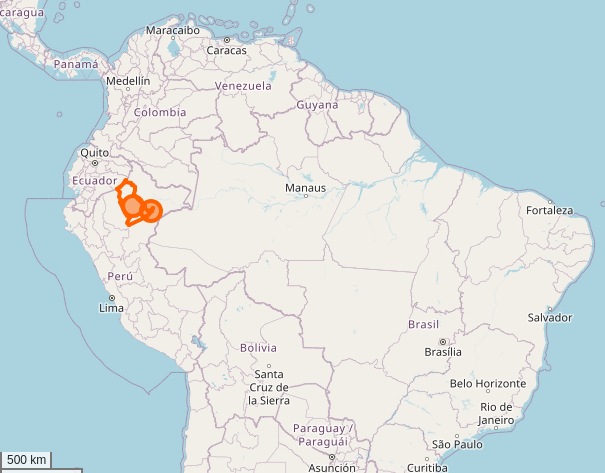
The Loreto region is Peru’s largest administrative region in terms of area. It is located in the northeast of the country. It has an area of 368,852 km² and a population of 1,039,400. The capital is Iquitos.
It is considered the most expensive chili pepper in the world and is also called caviar chili because it is one of the most expensive spices alongside vanilla and saffron. The Aji Charapita chili is harvested in the Peruvian Amazon region, particularly in the Loreto and San Martin regions, which border Brazil. The plants grow there in remote tropical areas and are harvested exclusively in the wild.
The fruits are picked by hand by local farmers when fully ripe.
The plant belongs to the Capsicum chinense genus and is a semi-wild, bushy variety with green foliage and white flowers. The fruits are pea-sized, round, shiny, and have a thin skin; they ripen from green to yellow or orange.
The heat level is between 8 and 10 on a scale of 10, which corresponds to a Scoville value of approximately 100,000 to 120,000 SHU. The flavor is fruity, aromatic, and exotic, and it is particularly prized for use fresh in salsa or as a dried powder.
A warm environment is crucial for cultivation, as the plant is sensitive to frost and does not continue to grow at temperatures below 12 °C.
Pre-cultivation should take place between the end of January and the end of February, with the ideal germination temperature being between 22 °C and 28 °C. The seeds are sown in a depth of 0.5 to 1 cm in potting soil and should be kept moist but not wet. After germination, the seedlings should be placed in a very bright location, ideally with plant lamps on dark days. Transplanting outdoors is possible from mid-May onwards, once temperatures are consistently warm and the risk of frost has passed. Pot cultivation is recommended, as the plants can be brought indoors when temperatures drop to protect them from cold spells.
The location should be in full sun, with at least six hours of direct sunlight per day, and the soil should be nutrient-rich, well-drained, and slightly moist.
A special chili soil or nutrient-rich substrate is suitable for pot cultivation. The plants should be watered regularly, ensuring that the soil does not dry out but also does not become waterlogged. During the growth phase, fertilization every two weeks with a low-nitrogen, phosphorus-rich fertilizer is recommended. The plants grow compactly and branch out, reaching heights of up to 80 to 100 cm. They are very high-yielding and can produce hundreds of fruits, with the harvest season between the end of August and the end of October.
The chilies are harvested when they have turned a bright yellow to orange color and measure about 0.5 to 1 cm in diameter.
The fruits can be eaten fresh, dried, pickled, or processed into powder. For overwintering, the plants should be cut back by about 20 cm in the fall and stored in a bright place at temperatures between 12 °C and 15 °C. Experience has shown that perennial plants develop better and produce a better harvest than plants that are sown annually. Propagation is also possible by cuttings in spring. The plants are sensitive to cold and can be damaged by whiteflies.
The smallest chili pepper is considered the most expensive spice in the world, with a price of up to 24,000 euros per kilogram.
Saffron
Saffron crocus Saffron is traditionally considered an expensive spice, as the stigmas must be harvested by hand early in the morning and around 200,000 flowers are needed to produce one kilogram. The main growing regions are Iran, Afghanistan, and Spain.
- Kashmir saffron: Considered the best saffron in the world, excellent quality, dark red color, strong aroma, high crocin content, prices up to 30 euros per gram.
- Iranian saffron (Super Negin): Considered the most expensive variety of saffron from Iran, it can cost up to 30 euros per gram, with demand and value for Iranian saffron continuing to rise.
- Spanish saffron: Although expensive due to high labor costs, it is not considered the best saffron, which is Kashmir saffron.
India
The most expensive and highest quality saffron comes from the Himalayan mountains in India and is known as Kashmir saffron.
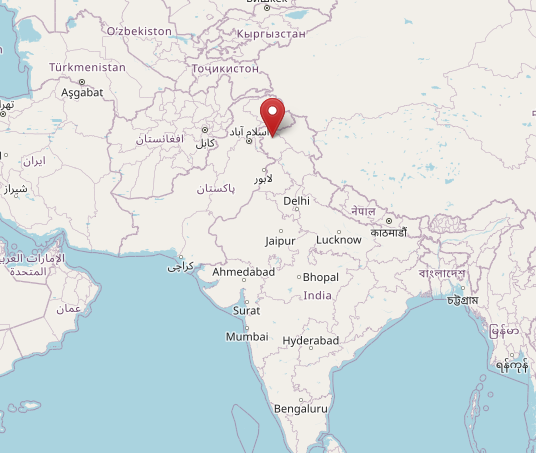
Saffron cultivation in Kashmir takes place mainly in the district of Pulwama, about 30 kilometers south of Srinagar, the summer capital of the Indian state of Jammu and Kashmir. The cultivation area extends over large fields divided into individual plots surrounding the village of Pampore, which are kept free of vegetation throughout the year.
The saffron crocus plants (Crocus sativus) are planted in August so that the harvest can take place every year from mid-October to mid-November. The flowers appear in late October or early November and must be picked by hand in the early morning
before they wilt, as they are only open for a few hours. Harvesting is done exclusively by hand, with the red stigmas (saffron threads) carefully extracted from each flower.
Due to its dark red color, strong aroma, and high crocin content, it is considered the highest quality saffron in the world. Prices for this saffron can reach up to 30 euros per gram, making it one of the most expensive types of saffron. The quality of saffron is measured by its crocin value, with values above 260 considered high quality and expensive.
Quality criteria: The quality of saffron is measured by its crocin value; values above 260 are considered high quality and expensive, while values below 200 are considered inferior.
Approximately 150 to 200 flowers are needed to produce one gram of dried saffron threads, which underscores the extremely labor-intensive nature of the process. The threads are then dried in a room at room temperature to preserve their aroma and color. Production is traditionally carried out in family businesses, which pass on their knowledge of cultivation and processing from generation to generation. Kashmir saffron enjoys a special reputation for high quality because it contains a high proportion of crocin, which gives it an incomparable red color and a unique aroma.
Iran
Saffron cultivation in Iran takes place mainly in the province of Khorasan, particularly in the city of Mashhad and the Torbat-Haidaryeh area, which is considered the center of Iranian saffron cultivation and is known worldwide for its production.
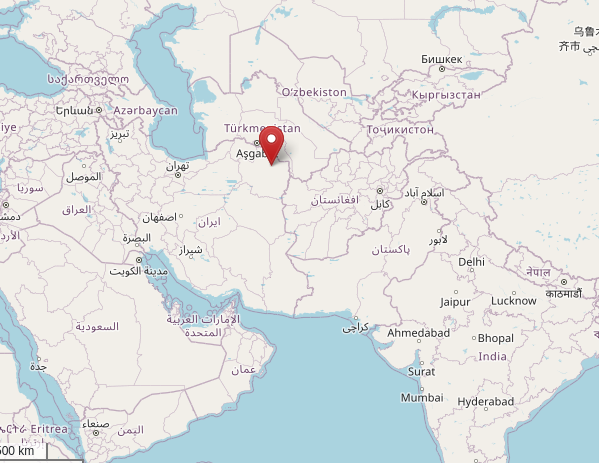
This region offers ideal climatic conditions with dry summers, cold winters, and sufficient sunshine, which are optimal for the growth of the saffron plant (Crocus sativus). The saffron bulbs are planted between August and September at a depth of about 15 to 20 centimeters and with a spacing of about 10 centimeters to protect them from cold and drought. The plant survives the rest of the year in the ground and only sprouts again in autumn.
The saffron fields usually begin to bloom in mid-October, with the flowering period lasting about three weeks and the harvest having to be completed within this period.
Harvesting is done exclusively by hand, as the flowers only stay fresh for up to three days and the saffron threads must be harvested early in the morning before the sun begins to shine. Only one kilogram of saffron threads can be obtained from approximately 150,000 to 170,000 flowers. The saffron bulbs must be replanted every 8 to 10 years to ensure an optimal harvest.
Iran is the world’s largest producer of saffron, supplying about 95 percent of global saffron production.
Iranian saffron is considered to be the best quality in the world, with
different varieties such as Negin, Sargol, and Pushal being distinguished
from one another.
- Negin is considered the highest quality and
is referred to as “the diamond on a ring,” which indicates its
purity and value. This variety consists of the
thick, red tips of the stigma threads, with the three
stigma legs remain together and all white and
orange parts are removed. This gives Negin
the volume and stigma length of Pushal, but combined
with the highest color intensity of Sargol. The coloring power (crocin)
is around 268, the aroma (safranal) around 50 and the
bitterness (picrocrocin) is around 95 according to the ISO standard 3632-2. Negin is particularly
popular for sophisticated culinary creations, medicinal purposes
and as a decorative element in Michelin-starred cuisine, as the threads
can also be eaten whole.
- Sargol is another high-quality variety,
consisting of the pure red tips of the stigma threads,
where the three stigma legs also remain together, but
all white and orange components are removed.
This variety is characterized by a particularly strong
coloring power and an intense aroma, with the coloring power
(Crocin) is around 265, the aroma (Safranal) is around 38
and the bitterness (Picrocrocin) is around 95. Sargol is
mainly used for cooking, as grinding it releases its
full coloring power and aroma.
- Pushal differs in that the
three stigma legs also remain together, but some
of the orange components remain, resulting in a
higher volume. This reduces the coloring power slightly
compared to Negin and Sargol, with the coloring power (crocin) at
around 250, the aroma (safranal) at around 40, and the
bitterness (picrocrocin) is around 85. The orange
components give Pushal a subtle sweetness that has a positive effect on
the aroma. This variety is well suited for
everyday use and is a good compromise between
volume, taste, and price.
The saffron threads are inspected in accordance with DIN ISO standard 3632-2 and processed without synthetic chemicals or fertilizers. The cultivation areas in Iran are characterized by high productivity and a long tradition of saffron cultivation, with more than 70,000 people directly or indirectly involved in saffron production.
The price for 1 kilogram of Negin saffron from Iran varies depending on quality and market price, but according to current information, it is around US$1,100 per kilogram. Some sources quote prices between €3,000 and €10,000 per kilogram for high-quality Iranian saffron, including the Negin variety, with the exact amount depending on quality, harvest time, and demand. The price of Negin saffron may also change due to market conditions and availability.
Afghanistan
The best variety of saffron from Afghanistan is the so-called “Super Negin,” which is grown in the province of Herat and is known for its long, deep red threads and its mild, fragrant flavor with a slightly sweet and tart aftertaste.
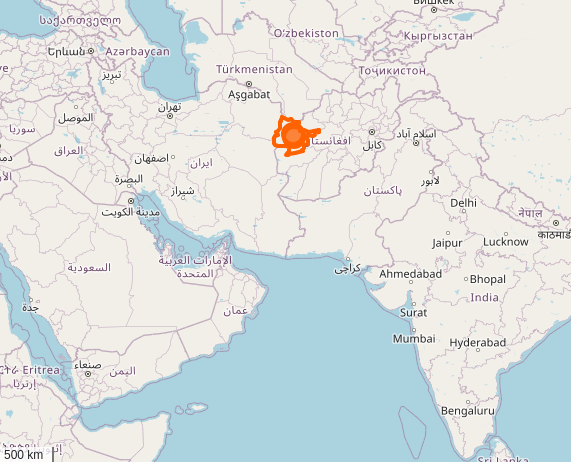
This saffron is picked by hand before sunrise to protect the delicate threads from sunlight and contamination, which contributes to its high quality. The quality of Afghan saffron is confirmed by laboratory analyses, with Conflictfood saffron from Afghanistan achieving the highest quality level 1 in all three decisive criteria – crocin, safranal, and picrocin – possible according to ISO standard 3632-2. In addition, Afghan saffron has won the “Superior Taste Award” several times, which is awarded by professional taste experts in Brussels, and has received three stars in all criteria, identifying the province of Herat as the best growing region in the world.
There are no current prices for 1 kg of Super Negin saffron directly from Afghanistan in 2025 in the search results provided. The most recent information available on prices for Afghan saffron is from 2021 and ranges from $780 to $900 per kilogram for export. For 2025, retail prices for premium saffron (Super Negin) are quoted at between €25 and €35 per gram, which corresponds to a total price of €25,000 to €35,000 per kilogram.
However, these retail prices are significantly higher than wholesale prices, which ranged between €2,100 and €3,000 per kilogram in 2021. As the search results do not contain current data for 2025, the current market price for 1 kg of Super Negin saffron from Afghanistan cannot be specified precisely.
Spain
The main saffron growing region in Spain is in Castile-La Mancha, particularly around the cities of Albacete, Toledo, Cuenca, and Ciudad Real. Albacete accounts for 82 percent of the cultivation area, Toledo for eight percent, and the remaining areas are distributed among Cuenca, Ciudad Real, and Tarragona.
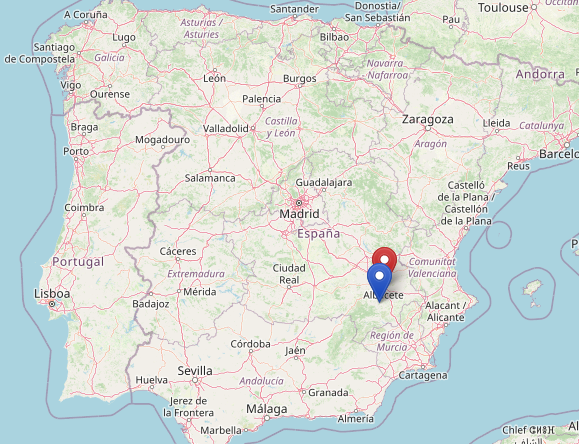
The La Mancha region is considered the most important saffron-growing area in Spain and Europe. Saffron is also grown in the Jiloca region between Zaragoza and Teruel in Aragon, where production is supported by small family farms and the Slow Food organization. Harvesting takes place in October, and production is extremely labor-intensive, as approximately 200 flowers are needed to produce one gram of saffron.
The price of a kilogram of saffron in Spain varies considerably depending on quality and origin, but typically ranges between €3,000 and €10,000 at retail. High-quality Spanish saffron, especially from regions such as La Mancha or Toledo, can fetch prices of up to €14,000 per kilogram, with prices varying greatly depending on quality and the year of harvest. Wholesale prices for Spanish saffron often range between €3,000 and €4,000 per kilogram, which is significantly higher than the price of Iranian saffron, which is around €1,000 per kilogram. Prices are also influenced by the labor-intensive, mainly artisanal cultivation and the low production volume in Spain, which amounts to only around 200 hectares.
Vanilla
The question of where the best vanilla is grown depends on individual preferences regarding aroma and use, as different types of vanilla have different characteristics.
Bourbon vanilla, which is mainly grown in Madagascar, is considered the most popular variety worldwide due to its intense and harmonious aroma.
Madagascar is the largest producer with around 30,000 hectares and supplies around 70 to 80 percent of the world’s vanilla production.
Vanilla is highly prized there due to the specific climatic conditions and traditional cultivation methods, including daily hand pollination of the flowers. The name “Bourbon vanilla” is protected and may only be used for pods from Madagascar and the island of Réunion.
The main growing area for vanilla in Madagascar is in the northeastern region known as the SAVA region, named after the initial letters of the four main towns of Sambava, Andapa, Vohemar, and Antalaha.
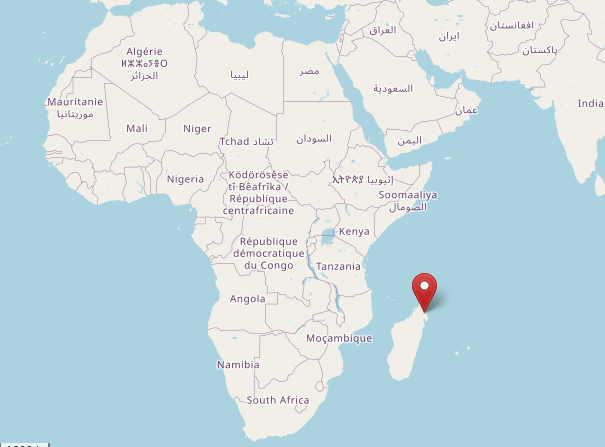
This region is considered the world’s leading vanilla growing area and is responsible for the production of Bourbon vanilla, named after the protected designation of origin, which is also grown on other islands in the Indian Ocean such as La Réunion, the Comoros, Mauritius, Mayotte, and the Seychelles. The SAVA region is characterized by a tropical, humid climate with high rainfall and average temperatures between 20°C and 30°C, providing ideal conditions for the vanilla orchid. About half of the world’s vanilla production comes from Madagascar, with annual production estimated at around 1,200 tons, accounting for about 70 to 80 percent of global production. Vanilla is grown on plantations, often in mixed cultivation with other spices such as pepper or cinnamon, and the plants are allowed to climb up support poles or trees to facilitate harvesting. The harvest season is between May and August, with the pods being harvested shortly before ripening, as otherwise they could fall too early. Processing the green pods is a complex process lasting several weeks, involving fermentation, drying, and storage to develop the characteristic aroma. However, vanilla production is affected by the destruction caused by cyclones during the rainy season from January to April, which has a negative impact on yields.
Vanilla from Taha’a in French Polynesia offers a contrast to this. The Vanilla Tahitensis grown there is characterized by a floral scent and a more intense aroma, which is said to be three times stronger than that of Madagascar vanilla.
However, due to its lower vanillin content and strong anise aroma, it is used less in cooking and more in perfumery and confectionery. Although it is known as the “queen of vanilla,” it is not the most commonly used variety worldwide.
Tahitian vanilla (Vanilla tahitensis) is considered the most sought-after and expensive vanilla in the world, as it is only grown on the South Sea island of Tahiti and only about 15 tons are produced annually for the entire world market. It is particularly prized in Michelin-starred restaurants for its thicker pods and unique aroma, reminiscent of anise, wild plums, and fruit gums. Although vanilla prices fluctuate overall, the price per kilogram of vanilla in 2019 was almost as high as that of real silver at just under 700 euros, with Tahitian vanilla being one of the most expensive varieties due to its limited cultivation and high production costs.
Vanilla from Madagascar, especially Bourbon vanilla, is also very expensive and is often referred to as the queen of vanilla varieties, but Tahitian vanilla is considered a more exclusive and expensive variety.
Overall, the “best” vanilla cannot be clearly defined as coming from one place. Bourbon vanilla from Madagascar is often considered the best due to its intense aroma and popularity in European cuisine, while Tahitensis vanilla is preferred in specific applications due to its unique fragrance.
← Älter Neuer →




